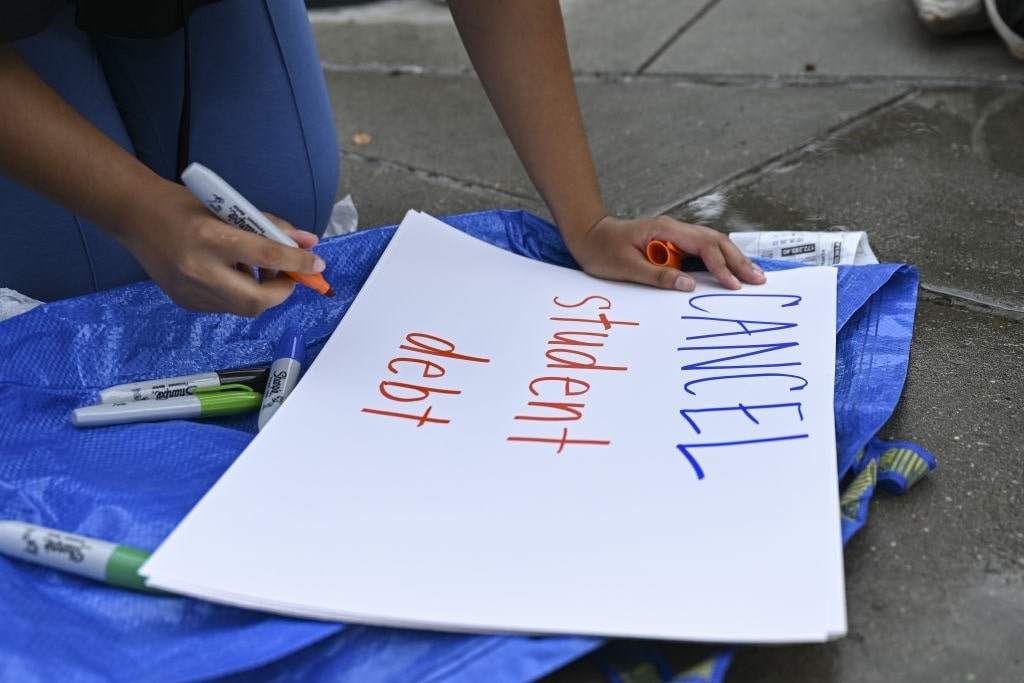The time has come for millions of Americans with student loans. Following a three-year pause due to the coronavirus pandemic, President Joe Biden and his administration reactivated a standard protocol in human decency: taking care of your obligations. Despite efforts to push through student loan forgiveness policies, approximately 29 million borrowers will be responsible for repaying the roughly $1.6 trillion debt. But how will this impact the US economy at a time of slowing growth?
Student Loans and Bidenomics
Various polls suggest that borrowers will struggle to make ends meet while repaying their student loan debts. As Liberty Nation recently reported, the average borrower owes nearly $29,000. But here is the deal: Studies show that many of these individuals do not earn enough to make payments, will plan to save less, will take on extra work, and will face financial ruin. Of course, the young whippersnappers are not the only ones facing pecuniary hardship, as half of the country says their finances are worse off than they were a year ago.
Indeed, this is terrible news for the broader economy. According to the final second-quarter GDP print from the Bureau of Economic Analysis, personal consumption cratered in the April-June period, coming in at 0.8%, down from 3.8% in the first quarter. Why does this matter? First, two-thirds of the US economy is driven by consumption. Second, if a significant portion of consumers allocate more of their income to servicing student loans, it will weigh on spending. Ultimately, the fourth-quarter numbers will be fascinating to monitor since the United Auto Workers union strike also will be factored into the equation.
But don’t worry. Uncle Joey Boy from Scranton will be sure to devise a scheme to defer or delete these monetary duties. It is Bidenomics 101!
Manufacturing Recession Persists
The US manufacturing recession persists as activity in the sector continued to shrink in September. The Institute for Supply Management’s Manufacturing Purchasing Managers’ Index rose to 49 this month, up from 47.6 in August and higher than the consensus estimate of 47.8 – anything below 50 indicates shrinkage. While this represented the slowest contraction in ten months, the final headline number was the 11th consecutive monthly below-50 reading in factory activity. New orders fell, output rebounded, employment was decent, and prices tumbled. Will September be the final month of the manufacturing recession? After the White House and state governments spent vast sums on corporate welfare, it must be – for the taxpayers’ sake!
Oil You Need Is Supply

(Allen J. Schaben / Los Angeles Times via Getty Images)
Crude oil prices have soared since the end of June, with West Texas Intermediate and Brent topping $90 per barrel. As the march toward $100 persists, economic observers are wondering if producers will take advantage of the situation by bolstering output. Based on a recent report from the Financial Times, US shale bosses insist they will hold back drilling activity, blaming Biden’s energy policies and Wall Street’s ESG obsession.
“I just don’t see producers getting all excited about near-term price, and I think we are going to see continued [price] volatility,” said Rick Muncrief, the Devon Energy CEO, in an interview with the business newspaper. “By nature, most of us will just say, ‘let’s stay disciplined. Let’s keep our production flat.'”
As the president says, “The proof is going to be eating the pudding.” The figures are concerning.
The Baker Hughes Oil Rig Count, a weekly measurement of the number of active drilling rigs across the country, fell to 502 for the week ending Sept. 29, down from 507 in the previous week. This was the lowest level since February 2022 and is down about 22% from the post-pandemic peak of 630. Meanwhile, data from the Energy Information Administration (EIA) show that crude production has skyrocketed since the start of August, soaring from 12.2 million barrels per day to 12.9 million, which is still short of the pre-crisis high. Industry experts say this will be short-lived because production volumes are slowing in key areas like Eagle Ford and Permian Basin. Other EIA statistics reveal that emergency stocks volumes fell again in the last week despite a modest six-week replenishment of the Strategic Petroleum Reserve. In addition, overall crude inventories are down 10% from a year ago to 767 million barrels.
Put simply, the current administration’s energy policy is comparable to a Biden speech: incomprehensible and jumbled. The American people only understand that the US government is showering the green energy industry with trillions of dollars in taxpayer money.




